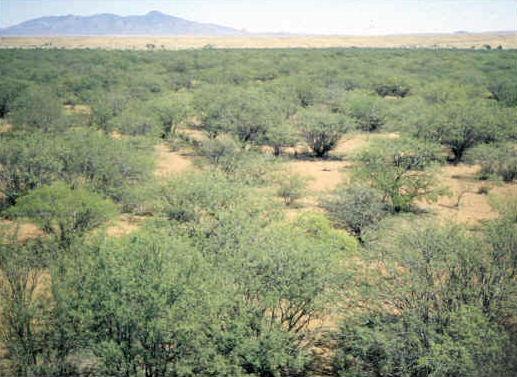<<GotoNote

Sonora (Spanish pronunciation: [soˈnoɾa] (listen)), officially Estado Libre y Soberano de Sonora (English: Free and Sovereign State of Sonora), is one of 32 states which comprise the Federal Entities of Mexico. It is divided into 72 municipalities; the capital city is Hermosillo.
Sonora is bordered by the states of Chihuahua to the east, Baja California to the northwest and Sinaloa to the south. To the north, it shares the U.S.–Mexico border primarily with the state of Arizona with a small length with New Mexico, and on the west has a significant share of the coastline of the Gulf of California.
Sonora's natural geography is divided into three parts: the Sierra Madre Occidental in the east of the state; plains and rolling hills in the center; and the coast on the Gulf of California. It is primarily arid or semiarid deserts and grasslands, with only the highest elevations having sufficient rainfall to support other types of vegetation.
Sonora is home to eight indigenous peoples, including the Mayo, the O’odham, the Yaqui, and Seri. It has been economically important for its agriculture, livestock (especially beef), and mining since the colonial period, and for its status as a border state since the Mexican–American War. With the Gadsden Purchase, Sonora lost more than a quarter of its territory.[10] From the 20th century to the present, industry, tourism, and agribusiness have dominated the economy, attracting migration from other parts of Mexico.
Several theories exist as to the origin of the name "Sonora". One theory states that the name was derived from Nuestra Señora, the name given to the territory when Diego de Guzmán crossed the Yaqui River on the day of Nuestra Señora del Rosario ("Our Lady of the Rosary"), which falls on October 7 with the pronunciation possibly changing because none of the indigenous languages of the area have the ñ sound. Another theory states that Álvar Núñez Cabeza de Vaca and his companions, who had wrecked off the Florida coast and made their way across the continent, were forced to cross the arid state from north to south, carrying an image of Nuestra Señora de las Angustias ("Our Lady of Anguish") on a cloth. They encountered the Opata, who could not pronounce Señora, instead saying Senora or Sonora. A third theory, written by Father Cristóbal de Cañas in 1730, states that the name comes from the word for a natural water well, sonot, which the Spaniards eventually modified to "Sonora". The first record of the name Sonora comes from explorer Francisco Vásquez de Coronado, who passed through the state in 1540 and called part of the area the Valle de la Sonora. Francisco de Ibarra also traveled through the area in 1567 and referred to the Valles de Señora.[11] The literal meaning of "sonora" in Spanish is a feminine form of the adjective "sonoro" meaning "sonorous" or "loud."
Evidence of human existence in the state dates back over 10,000 years, with some of the best-known remains at the San Dieguito Complex in the El Pinacate Desert. The first humans were nomadic hunter gatherers who used tools made from stones, seashells, and wood.[12][13] During much of the prehistoric period, the environmental conditions were less severe than they are today, with similar but more dense vegetation spread over a wider area.[14]
...https://en.wikipedia.org/wiki/Sonora